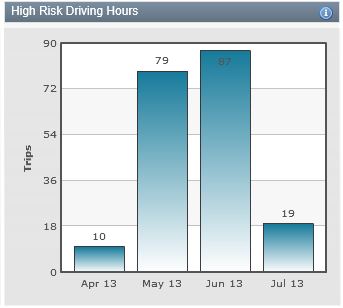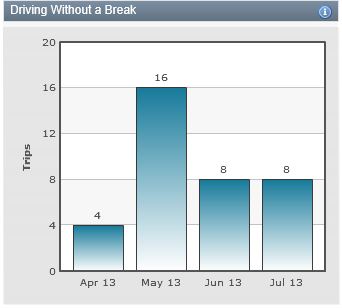Mileage and Time Management

Run Your Tracking can ensure managers know where vehicles are being driven and how they are being used. This may benefit the business in a number of ways. Automatic mileage updates can be received by managers or suppliers, such as leasing companies, to enable proactive servicing and timely replacement of vehicles.
In addition, tracking systems are able to identify a vehicle’s location, so the right vehicle and employee can be sent to the closest job. Furthermore, typical journey patterns can be monitored and reviewed instantly using Google Maps routes to establish the most efficient route.
Run Your Tracking also helps to automate manual and time-consuming processes, such as timesheets, to make them more accurate and reduce paperwork. The system will automatically log vehicle use and location along with the start and end of the working day. This information can then be imported into payroll systems.
Run Your Tracking can also be used, via the driver portal to log whether mileage is business or private to improve expenses claims.
Fuel and Emissions
Achieving lower fuel use as a result of lower mileage is just one of the benefits of Run Your Tracking. In addition, the system can report on the fuel economy and CO2 emissions of specific vehicles by calculating the actual fuel added and the actual mileage driven. The ability for Run Your Tracking to report re-fuelling events also helps to eliminate fraudulent use of fuel cards.
Some customers have seen a 50% difference in fuel economy in identical cars over similar journeys. Much of the excess fuel use was down to driving style, including excessive speed and harsh acceleration. This level of insight isn’t possible with other fuel management systems, such as fuel cards, mainly as the process involves the driver accurately recording mileage when filling up.
By having more accurate, vehicle-specific data, a company can quickly identify where action needs to be taken, such as with driver training.
Furthermore, by improving fuel economy and reducing time spent idling, a business can ensure it reduces its total carbon emissions, which is a key consideration as businesses are increasingly required to provide carbon reporting as part of their annual results.
Driver Risk Management

Run Your Tracking can provide the information needed to improve safety, reduce accidents and combat vehicle crime. In particular, the Run Your Tracking system can clearly identify speeding, harsh braking and acceleration, over-revving and hours of vehicle use.
This information can be used to pinpoint safety issues so drivers and managers can be trained and educated. In addition, managers are able to view fleet risk league tables so they can prioritise driver training accordingly.
This level of insight may be viewed with suspicion by employees, but many companies have tackled this issue successfully by focusing on the personal benefits, such as identifying driving style changes that bring lower personal fuel bills and improved safety.
Financial Benefits
If senior management are going to take up the challenge of persuading employees to accept Run Your Tracking, then the financial argument must be persuasive and clear.
Typically, better scheduling, higher productivity and increased vehicle utilisation, can cut operating costs by 10%.
By covering fewer miles, reducing speeding and improving driving style, fuel use and CO2 emissions can be cut by 15%.
Finally, independent sources state that effective use of telematics that reduced incidences of speeding and greater levels of driver awareness can cut insurance claims costs by up to 50% (source: Greenroad).
By using Run Your Tracking to record drivers’ hours, unnecessary overtime claims can be reduced, often by tens of thousands of pounds, while there are other fringe benefits too.
Because the Run Your Tracking system provides accurate location and time information, a number of companies claim they have successfully challenged false insurance claims and successfully challenged fines for parking infringements.
In addition, insurance companies may be willing to consider a reduction in premiums if managers are able to demonstrate effective use of the Run Your Tracking system.
 Run Your Tracking can ensure managers know where vehicles are being driven and how they are being used. This may benefit the business in a number of ways. Automatic mileage updates can be received by managers or suppliers, such as leasing companies, to enable proactive servicing and timely replacement of vehicles.
In addition, tracking systems are able to identify a vehicle’s location, so the right vehicle and employee can be sent to the closest job. Furthermore, typical journey patterns can be monitored and reviewed instantly using Google Maps routes to establish the most efficient route.
Run Your Tracking also helps to automate manual and time-consuming processes, such as timesheets, to make them more accurate and reduce paperwork. The system will automatically log vehicle use and location along with the start and end of the working day. This information can then be imported into payroll systems.
Run Your Tracking can also be used, via the driver portal to log whether mileage is business or private to improve expenses claims.
Run Your Tracking can ensure managers know where vehicles are being driven and how they are being used. This may benefit the business in a number of ways. Automatic mileage updates can be received by managers or suppliers, such as leasing companies, to enable proactive servicing and timely replacement of vehicles.
In addition, tracking systems are able to identify a vehicle’s location, so the right vehicle and employee can be sent to the closest job. Furthermore, typical journey patterns can be monitored and reviewed instantly using Google Maps routes to establish the most efficient route.
Run Your Tracking also helps to automate manual and time-consuming processes, such as timesheets, to make them more accurate and reduce paperwork. The system will automatically log vehicle use and location along with the start and end of the working day. This information can then be imported into payroll systems.
Run Your Tracking can also be used, via the driver portal to log whether mileage is business or private to improve expenses claims.
 Run Your Tracking can provide the information needed to improve safety, reduce accidents and combat vehicle crime. In particular, the Run Your Tracking system can clearly identify speeding, harsh braking and acceleration, over-revving and hours of vehicle use.
This information can be used to pinpoint safety issues so drivers and managers can be trained and educated. In addition, managers are able to view fleet risk league tables so they can prioritise driver training accordingly.
This level of insight may be viewed with suspicion by employees, but many companies have tackled this issue successfully by focusing on the personal benefits, such as identifying driving style changes that bring lower personal fuel bills and improved safety.
Run Your Tracking can provide the information needed to improve safety, reduce accidents and combat vehicle crime. In particular, the Run Your Tracking system can clearly identify speeding, harsh braking and acceleration, over-revving and hours of vehicle use.
This information can be used to pinpoint safety issues so drivers and managers can be trained and educated. In addition, managers are able to view fleet risk league tables so they can prioritise driver training accordingly.
This level of insight may be viewed with suspicion by employees, but many companies have tackled this issue successfully by focusing on the personal benefits, such as identifying driving style changes that bring lower personal fuel bills and improved safety.

